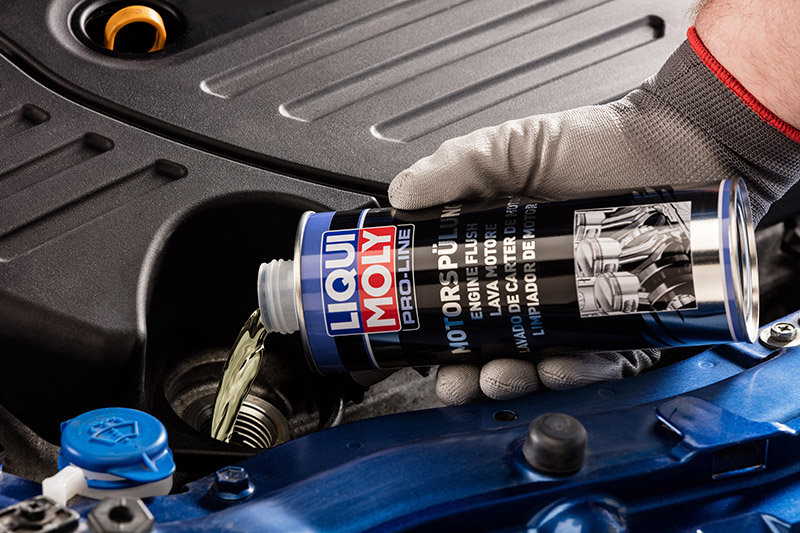
In this series, Liqui Moly investigates common vehicle problems and proposes a solution. This month, it addresses a vehicle with high oil consumption.
Problem: High oil consumption
Solution: Pro-Line Engine Flush
Assessment: A car consuming a lot of oil is not only costly for the owner, but also risks the oil level falling below the minimum, creating that wear which can clog the engine. With this high oil consumption, ash-forming additives in the oil can leave deposits in the combustion chamber or damage the exhaust gas treatment system. Some car manufacturers define the limits of what they consider normal oil consumption quite broadly: up to one litre of oil per 1,000 kilometres or 625 miles is acceptable, they say. Converted to an oil change interval of 30,000 kilometres (18,750 miles), this means oil consumption of 30 litres.
Sometimes dirty and stuck piston or oil scraper rings are the cause for high oil consumption. As a result, they can no longer wipe off the oil on the cylinder wall as well; it enters the combustion chamber and the oil is burned. Of course, this issue could be solved by removing the piston and then cleaning or replacing the piston rings.
It’s easier, faster and cheaper with Pro-Line Engine Flush by LIQUI MOLY. This additive is added to the existing motor oil shortly before the oil change and the engine is run at idling speed for around 10 to 15 minutes. It also loosens deposits at other points in the oil circuit. The loosened dirt is then drained together with the used motor oil. The fresh motor oil enters a clean engine and can then deploy its maximum performance.
Cleaning the oil circuit in this way helps to increase the performance, reliability and service life of the engine, meaning you can go ahead even without much prior fault diagnosis. Even if the oil consumption does not decrease because it was not due to dirty piston rings, the car still benefits.









